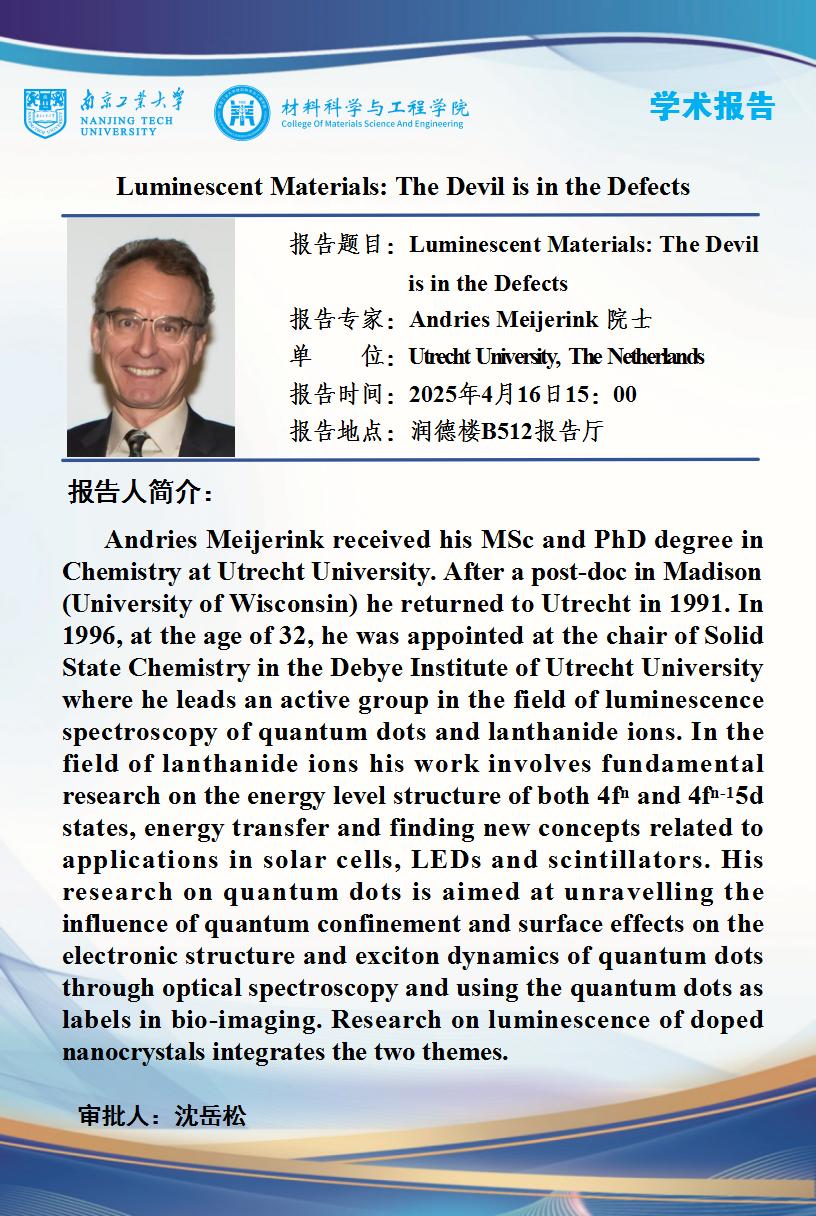报告题目: Luminescent Materials: The Devil is in the Defects
报 告 人:Andries Meijerink 院士
报告人单位:Utecht University, The Netherlands
报告时间: 2025.4.16 15:00
会议地点: 南京工业大学材料学院B512报告厅(润德楼B512)
举办单位: 材料科学与工程学院
报告人简介:Andries Meijerink received his MSc and PhD degree in Chemistry at Utrecht University. After a post-doc in Madison (University of Wisconsin) he returned to Utrecht in 1991. In 1996, at the age of 32, he was appointed at the chair of Solid State Chemistry in the Debye Institute of Utrecht University where he leads an active group in the field of luminescence spectroscopy of quantum dots and lanthanide ions. In the field of lanthanide ions his work involves fundamental research on the energy level structure of both 4fn and 4fn-15d states, energy transfer and finding new concepts related to applications in solar cells, LEDs and scintillators. His research on quantum dots is aimed at unravelling the influence of quantum confinement and surface effects on the electronic structure and exciton dynamics of quantum dots through optical spectroscopy and using the quantum dots as labels in bio-imaging. Research on luminescence of doped nanocrystals integrates the two themes.
报告摘要:Luminescent materials are at the heart of lighting, displays and imaging devices while new functionalities are explored for sensing, security and information technology, also driven by unique capabilities of nanocrystals. Optical properties are well-understood and rely on luminescent ions that absorb and emit light as required. At the same time, defects play a crucial role in the performance, limiting efficiency, stability and response but the nature and role of defects has remained elusive. In this presentation three topics will be addressed where the crucial role of defects and impurities will be discussed:
1) Strong variations in luminescence efficiency, spectra and afterglow induced by ppm levels of impurities and defects in micro- and nanocrystalline phosphors.
2) Charge trapping and recombination processes in persistent luminescent materials.
3) Ion diffusion in lanthanide-doped microcrystals and (core-shell) nanocrystals.
Defect identification is difficult and only for a few systems clear evidence for the nature and role of defects has been obtained using a combination of techniques, including luminescence, EPR/ENDOR, elemental analysis, thermally- and optically stimulated luminescence and, more recently, also taking advantage of atomic resolution electron microscopy.Next to discussing the state-of-the-art an outlook will be given aimed to stimulate research into a better understanding of the role of defects in our field.
审核:沈岳松


